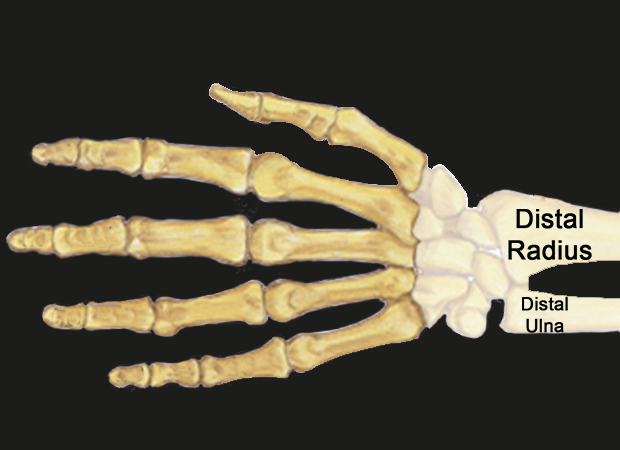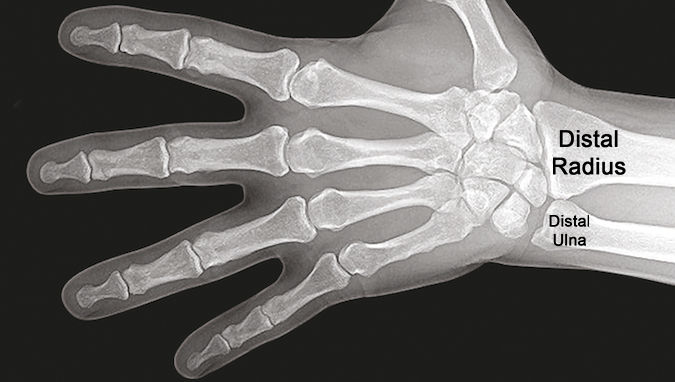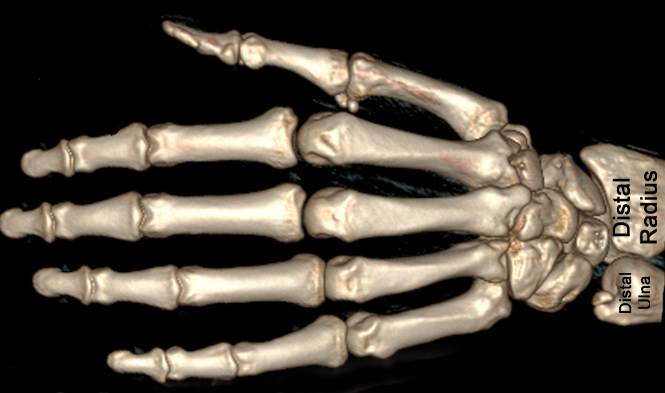Distal Ulna Exam
- When examining the distal ulna look for deformity, swelling, loss of ulnocarpal and radioulnar joint motion.
- Palpate for tenderness and crepitus in joint and bone.
- X-ray evaluation is typically needed.
Diagrams & Photos
Key Points
- When evaluating fractures of the distal ulna look for step-offs and/or gaps in the articular surface of the distal radius.
- When evaluating trauma to the distal ulna look for signs of subluxation and/or dislocation of the distal ulna.
- When evaluating ulnar styloid base fractures be aware that the TFCC may no longer be attached to the remaining ulnar head and ulnar shaft.
- Distal ulna fracture evaluation may also require CT scans to properly visualize fragments, angulations, degree of fragment displacement and subluxation.
- Ulnar positive variance may cause ulnolunate impaction syndrome and cysts in the ulnar subchondral lunate bone.


